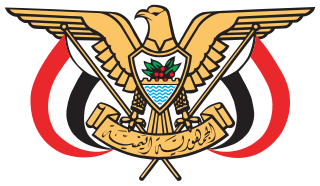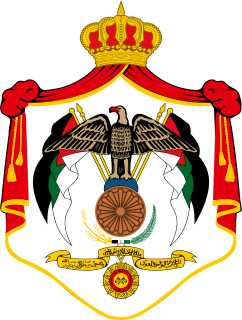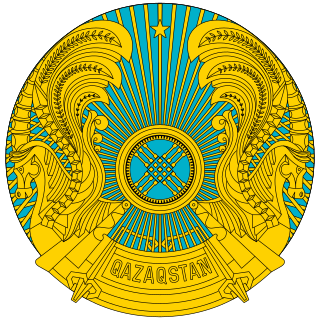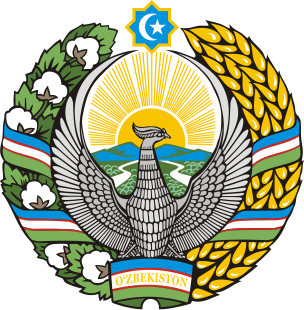Parliamentary elections were held in Czechoslovakia on 26 May 1946. The Communist Party of Czechoslovakia emerged as the largest party, winning 114 of the 300 seats with 38% of the vote. This was the best performance for a Czechoslovak party up to that time; previously no Czechoslovak party had ever won more than 25 percent of the vote. Voter turnout was 93.9%. As it turned out, this was one of only two even partially free elections held in what would become the Eastern bloc, the other having been held in Hungary a year earlier. It would be the last free election held in Czechoslovakia until 1990.
Parliamentary elections were held in Finland on 1 and 2 October 1930. The Social Democratic Party emerged as the largest in Parliament with 66 of the 200 seats. Voter turnout was 65.9%.
Parliamentary elections were held in Finland between 1 and 3 July 1933. The Social Democratic Party remained the largest party in Parliament with 78 of the 200 seats. However, Prime Minister Toivo Mikael Kivimäki of the National Progressive Party continued in office after the elections, supported by Pehr Evind Svinhufvud and quietly by most Agrarians and Social Democrats. They considered Kivimäki's right-wing government a lesser evil than political instability or an attempt by the radical right to gain power. Voter turnout was 62.2%.

Parliamentary elections were held in Yemen on 27 April 1993, the first after Yemeni unification. The General People's Congress emerged as the largest party, winning 123 of the 301 seats. Voter turnout was 84.8%.

General elections were held in Turkey on 21 July 1946, the first multi-party elections in the country's history. The multiple non-transferable vote electoral system was used. The result was a victory for the Republican People's Party, which won 395 of the 465 seats.

General elections were held in Jordan on 29 August 1951. As political parties were banned at the time, all candidates ran as independents, although some affiliated with the Jordanian Communist Party, the Ba'ath Party the Arab Constitutional Party and the Umma Party all won seats.

General elections were held in Jordan on 8 November 1989, the first since 1967. As political parties were banned at the time, all 647 candidates ran as independents, although 22 of the 80 successful candidates were Muslim Brotherhood members. Voter turnout was 53.1%.

Parliamentary elections were held in Syria on 10 and 11 February 1986. Members were elected using the multiple non-transferable vote in fifteen constituencies, with an average district magnitude of thirteen. The result was a victory for the Arab Socialist Ba'ath Party, which won 130 of the 195 seats.

Parliamentary elections were held in Syria on 24 and 25 August 1994. Members were elected using the multiple non-transferable vote in fifteen districts, with an average district magnitude of 16.7. The result was a victory for the Ba'ath Party, which won 135 of the 250 seats. Voter turnout was 61.2%.

Parliamentary elections were held in Armenia on 20 May 1990, although further rounds were held on 3 June and 15 July due to low turnouts invalidating earlier results and by 21 July 64 seats were still unfilled, with 16 still unfilled in February the following year. The result was a victory for the Communist Party of Armenia, which won 136 of the 259 seats. The remaining candidates were all officially independents, but almost all were members of the Pan-Armenian National Movement. Overall voter turnout was 60.2%.

Presidential elections were held for the first time in Azerbaijan on 8 September 1991. The only candidate was Ayaz Mutalibov of the Azerbaijan Communist Party, who won with 98.5% of the vote, with turnout reported to be 85.7%.

Supreme Soviet elections were held in Kazakhstan on 25 March 1990. Of the 360 seats, 270 were directly elected, whilst 90 were selected by public associations. The Communist Party of Kazakhstan won 342 of the 360 seats, with the remainder going to independents. Voter turnout was reported to be 84.0%.

Supreme Soviet elections were held in the Tajik SSR on 25 February 1990. The Communist Party of Tajikistan was the only legal political party at the time, with only independent candidates contesting seats. The CPT won 96% of the 230 seats in Parliament.

Parliamentary elections were held in Tajikistan on 26 February 1995, with a second round in 20 of the 181 constituencies on 12 March. A total of 354 candidates ran for the 181 seats, although 40% were won uncontested. The Communist Party of Tajikistan remained the largest party, although independents won the majority of seats. Voter turnout was 84.0%.

Supreme Soviet elections were held in the Turkmen SSR on 7 January 1990. Although multi-party politics had been introduced, the Communist Party of Turkmenistan was the only registered party. It won around 90% of the 175 seats. Voter turnout was 93.6%.

Supreme Soviet elections were held in the Uzbek SSR on 18 February 1990. Of the 500 seats, 368 were decided in the first round. The result was a victory for the Communist Party of Uzbekistan, which won 348 of the 368 seats in the first round, whilst around 50 seats went to Unity.

Parliamentary elections were held in Mongolia on 22 June 1986. At the time, the country was a one-party state under the rule of the Mongolian People's Revolutionary Party. The MPRP won 346 of the 370 seats, with the remaining 24 seats going to non-party candidates, who had been appointed by the MPRP due to their social status. Voter turnout was reported to be 100%, with only ten of the 929,403 registered voters failing to cast a ballot.

National Assembly elections were held in areas controlled by North Vietnam on 6 January 1946. Held under the 1946 constitution, they resulted in a victory for the Communist-led League for the Independence of Vietnam, which won 182 of the 302 seats, although the distribution of seats had been decided before the elections. The ballot was not secret, and ballot papers were filled out in the presence of aides who were "to help comrades who had difficulty in making out their ballots."
Constitutional Assembly elections were held in South Vietnam on 4 March 1956. A total of 431 candidates contested the 123 seats from all five registered pro-government political parties, with 11 elected as pro-government independents. Due to President Diem's policy of repression against the opposition and rigid control of the elections in order to prevent infiltration of Viet Cong communist elements, no opposition candidates were allowed to stand. Two deputies were not permitted to take seats due to electoral violations, making the total number of deputies seated at 121. On 26 October the body was transformed into the National Assembly after the new constitution came into effect.

General elections were held in Uruguay on 30 November 1930. The various factions of the Colorado Party received the most votes in the elections for the President and National Administration Council.














